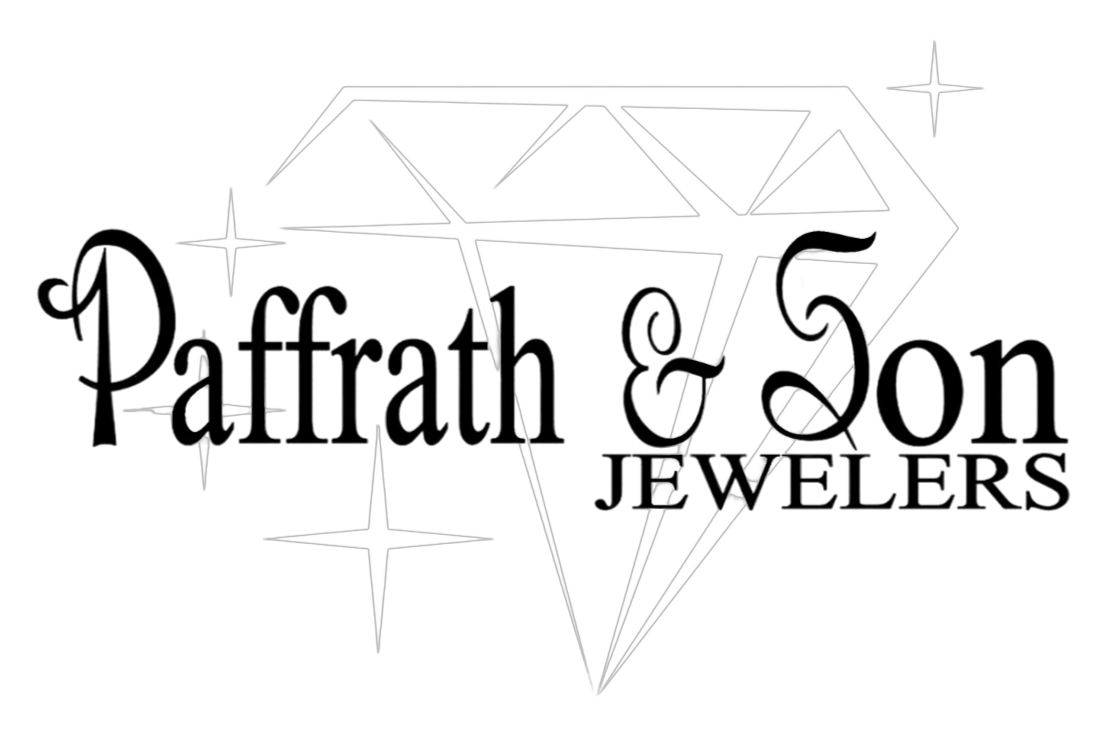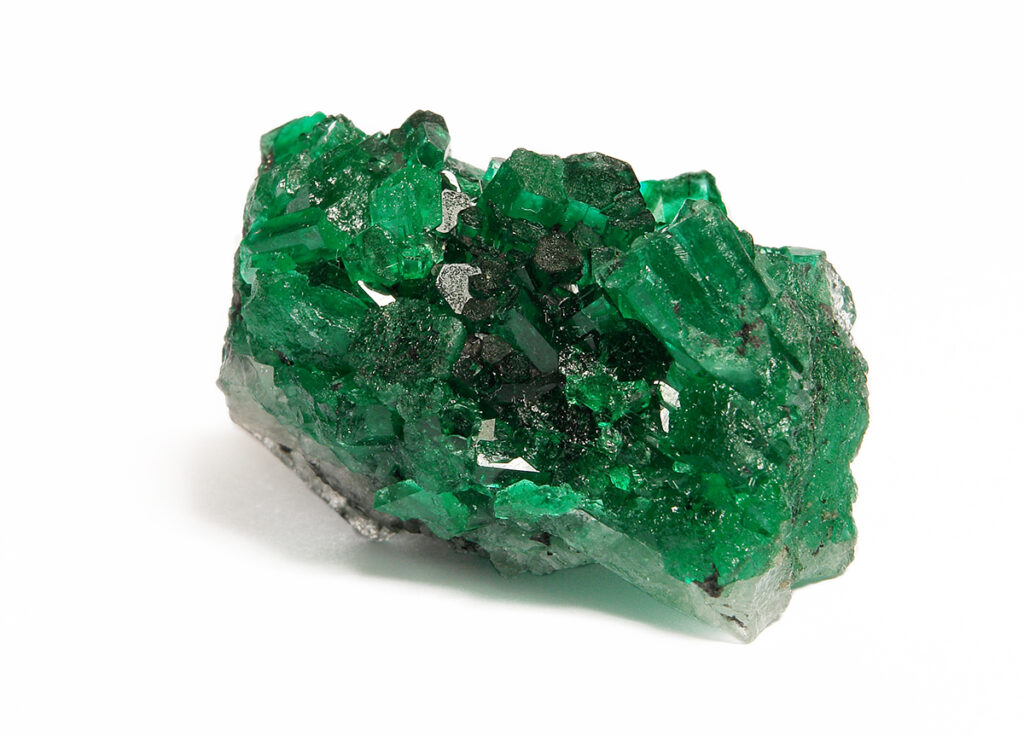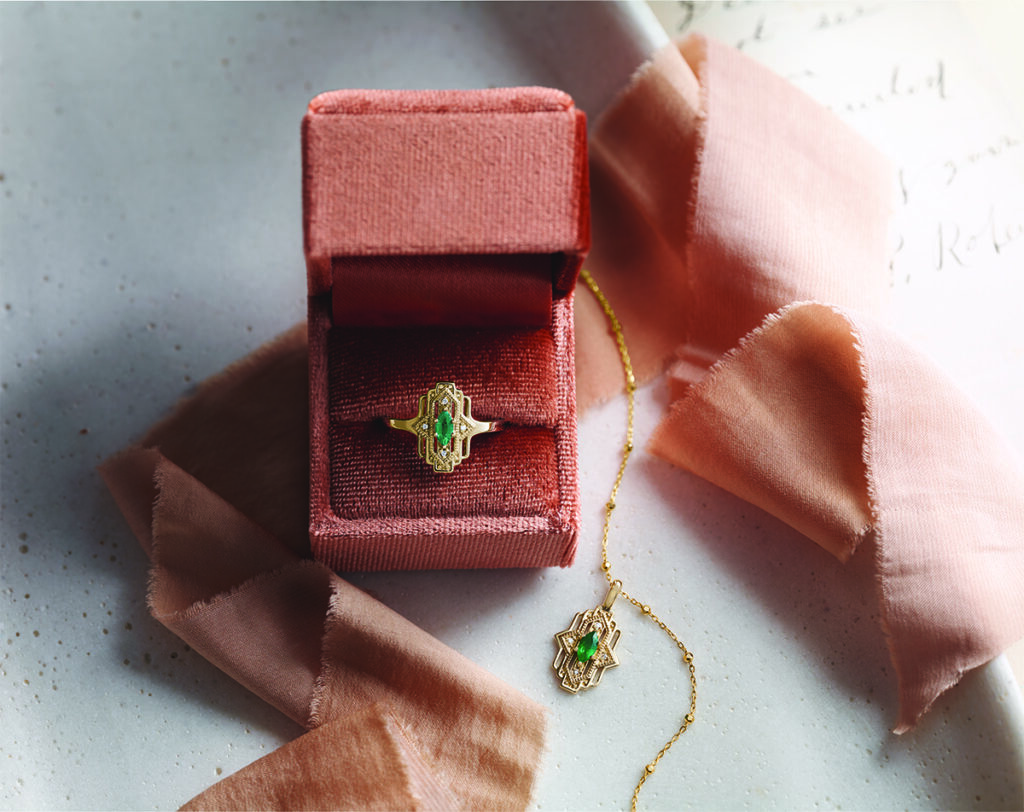Donec efficitur, ligula ut lacinia
viverra, lorem lacus.
May Birthstones: Emerald
The breathtaking emerald is considered the birthstone for the month of May, however there are as many as six alternate gemstones that people enjoy. Other options include agate, chrysoprase, carnelian, chalcedony, and the sapphire. As the emerald is the most traditional option, this article will focus on the rich green gem, however, our expert team at Paffrath & Son Jewelers in Willmar, MN can also help you find the optimal alternative to suit your personal tastes.
A member of the beryl family, emeralds have been revered for their rich and powerful green hues since ancient times. It is a fitting compliment to the greens of spring and one of the reasons it was chosen as the May birthstone. There are numerous beliefs relating to emerald that have been held over the centuries. Some believed that placing an emerald under the tongue would protect from evil and reveal truth. Others trusted in it as a cure for diseases. Romance is also represented as the emerald was used to help determine the sincerity of a lover’s promise. Still others used it as a tool to improve as an eloquent communicator. During biblical times, emerald was also legendary, and one of four stones given to King Solomon by God to offer the power over creation to the king. Today, it is still prized and believed to be incredible for emotional healing, improved memory, and focus, making informed decisions and some other metaphysical properties. Named from a Greek word that means “green gemstone”, emeralds were highly regarded by royalty and other dignitaries. Cleopatra appreciated emeralds so much that she both wore and adorned her palace with the gem, as well as giving it as a gift to other leaders and dignitaries.
The primary location emeralds are mined is Columbia and has been for over 500 years. Columbian emeralds are often considered the standard to which all other emeralds are compared. Shades and intensities of colors can vary even between gems from the same mine. Other primary sources include Brazil and Zambia in Africa. Emeralds are hydrothermal, requiring both water and heat to form. Most are created in veins caused by hydrothermal fluids that break free from magma deep in the earth’s crust. Those fluids containing the necessary elements will begin to cool and harden into gems. Some emeralds also form in deposits of pegmatite, an igneous host rock that often are commercial sources for a range of elements, including beryl. Commercial emerald operations usually utilize open pit mining, but terraced and tunnel mining are also used. Extraction is delicate and can be painstaking as blasting and other aggressive mining techniques can damage the gems.
You may be surprised to learn that emeralds are significantly rarer than diamonds and can demand a premium price depending on the quality and size. However, qualities can vary, and many breathtaking emeralds are available for those on a budget. The deeper and more vivid the gemstone, the more the value increases. Emeralds are a 7.5 to 8 on the Moh’s hardness scale, meaning it has a fair to good toughness and can be worn with some consideration and care. Especially hard on emeralds are heat, extreme light, and chemicals. Heat and light can cause or extend internal fractures; chemicals can seep into internal fractures and cause deterioration. Emeralds should not be worn when engaging in rigorous activities and should never be cleaned with an ultrasonic cleaner or steam. Warm water with a gentle soap is the optimal method.
One consideration when selecting an emerald is that most emeralds available on the market have been treated in some form. There are various methods of treatment all meant to strengthen and improve the gem. Fracture filling is used to protect internal fractures from growing and cracking the emerald. Oils, resins, and waxes are also sometimes used to improve the surface appearance. Most accept these treatments as standard and do not reduce the value. However, emeralds that have been dyed are rarely carried by professional jewelers and the value can be significantly compromised. Your jeweler can provide you with the information and in some cases the documentation that verifies the exact details of your gem including any treatments or dyeing. When purchasing an emerald from a someone other than a reputable jeweler, do your research as there are imitation emeralds made from a variety of materials including glass, peridot, garnet, and other forms of beryl. The safe bet is always to work with a professional jeweler for your emerald purchase.
Emeralds are an incredibly stunning and versatile gemstone that will “wow” people in a vast range of settings and styles. They are used in everything from earrings and necklaces to bracelets and rings. Paffrath and Son Jewelers carries and excellent selection of quality emerald jewelry to choose from, and our in-house master jeweler can work with you to design a one-of-a-kind custom piece that is exactly what you’ve dreamed of. We invite you to visit our store and allow our experienced and caring team to assist you every step of the way. In case there is a preference for alternate May birthstones, we can also help you choose your ideal piece. For nearly a century, Paffrath & Son has served West Central Minnesota as its local, family jeweler. We take pride in providing an exceptional experience to everyone we serve. Our passion is helping you and providing you all you need to make the most informed decision. We look forward to serving you!


